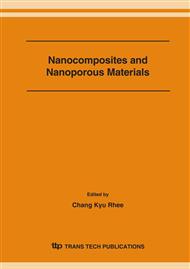p.83
p.87
p.91
p.95
p.99
p.103
p.107
p.111
p.115
Surface Slip Markings Of Fatigue-Tested Materials Hardened By Precipitates: Dislocation Dynamics Approach
Abstract:
Fatigue simulations are performed by using the new parallel discrete dislocation dynamics code. The effects of particles (shearable or non-shearable) on the fatigue properties, e.g. the cyclic mechanical response and the surface markings, are presented. The simulated results are found to represent the features observed in the experiments well. Fatigue of materials containing both shearable and non-shearable particles (bimodal case) is also simulated. The Orowan loops accumulated around the non-shearable particles promote a dispersion of the slips by a local cross slip, and the fatigue features of the bimodal case are in between those of the shearable and the non-shearable particle case.
Info:
Periodical:
Pages:
99-102
Citation:
Online since:
January 2007
Authors:
Price:
Сopyright:
© 2007 Trans Tech Publications Ltd. All Rights Reserved
Share:
Citation:


